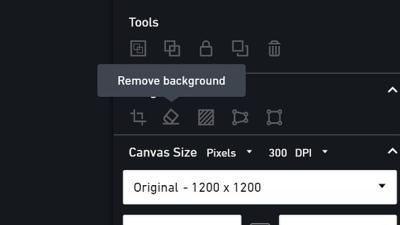Thinking about turning your photography or design passion into a steady income? Shutterstock might just be the platform for you! As one of the world’s leading stock content marketplaces, Shutterstock offers countless opportunities for new contributors to showcase their work and earn money. Whether you’re a professional photographer, a graphic designer, or someone with a collection of high-quality images,
Understanding Shutterstock’s Submission Requirements and Guidelines

Before you start uploading your content, it’s crucial to understand Shutterstock’s submission requirements and guidelines. This ensures your images, videos, and illustrations meet quality standards and are accepted smoothly into their marketplace. Here’s what you need to know:
File Quality and Format
- Resolution: Images should be at least 4 megapixels, but higher resolution files are preferred.
- File Format: JPEG for photos and illustrations; MOV or MP4 for videos.
- Color Profile: Use sRGB color space for consistency across devices.
Content Quality and Restrictions
Shutterstock is strict about quality and content appropriateness. Your submissions should be:
- Sharp and clear: Avoid blurry or pixelated images.
- Well-lit and properly exposed: No overexposed or underexposed shots.
- Original and unique: Avoid duplicates or heavily edited stock photos from other sources.
Additionally, certain content is prohibited or requires special considerations:
- Prohibited Content: No illegal, violent, discriminatory, or adult content.
- Model Releases: If you feature identifiable people, you must have proper model releases.
- Property Releases: For recognizable private property or trademarks, appropriate permissions are necessary.
Metadata and Keywording
Accurate and detailed metadata help your content get discovered. Include relevant keywords, descriptions, and categories to improve visibility. Use descriptive language and avoid keyword stuffing. Think about what a buyer might search for when looking for content like yours.
Submission Process
Uploading your content is straightforward through Shutterstock’s contributor portal. Before submitting, double-check your files and metadata. Once uploaded, your content will go through a review process that typically takes a few days. Be patient and ready to make adjustments if needed based on feedback.
By understanding and adhering to these guidelines, you set yourself up for a smoother submission experience and increase your chances of success on Shutterstock. Remember, quality and compliance are key to building a reputable portfolio and earning a steady income.
Creating High-Quality Content That Stands Out
When it comes to making a splash on Shutterstock, quality is king. Think about it this way: with thousands of images uploaded daily, how do you make sure yours catch the eye? The answer is simple — create content that is not only technically perfect but also unique and engaging.
First, focus on technical excellence. This means ensuring your images are sharp, well-lit, and correctly exposed. Use a good camera and pay attention to details like focus and composition. Remember, a blurry or poorly lit photo can be an immediate turn-off, even if the subject is interesting.
Next, consider the originality of your content. Shutterstock values fresh, new perspectives. Instead of just taking typical shots, try to find creative angles or capture moments that tell a story. For example, instead of a standard picture of a cup of coffee, think about capturing the steam swirling in interesting ways or the cozy hands holding it. Unique compositions and concepts will help your images stand out from the crowd.
In addition, pay attention to trends. Check Shutterstock’s trending collections and keywords to see what’s popular. But don’t just copy what’s trending—put your own spin on it. For example, if minimalism is trending, create clean, simple images that evoke calmness and elegance. This helps your content resonate with current market demands while maintaining your personal style.
Editing also plays a crucial role. Use tools like Adobe Lightroom or Photoshop to enhance colors, contrast, and clarity. Just be careful not to over-edit; aim for natural-looking results that highlight the subject without making the image look artificial.
Lastly, think about your niche. Whether it’s food, travel, business, or lifestyle, developing a signature style can make your work recognizable and more appealing to buyers. Consistency helps build your portfolio’s reputation and can lead to repeat customers who trust your quality.
Remember, creating high-quality content isn’t a one-and-done task. Keep practicing, learning new techniques, and seeking feedback. The more you hone your skills, the more your content will stand out—and the more success you’ll find on Shutterstock.
Optimizing Your Uploads for Better Visibility and Sales
Now that you’re creating stunning images, it’s time to make sure they get seen. Optimization is key to increasing your visibility on Shutterstock and driving more sales. Think of it as giving your images the best chance to be discovered by the right buyers.
Start with keywords. Keywords are essentially the bridge between your images and potential customers searching for specific content. Use descriptive, accurate, and relevant keywords that reflect the content of your image. Include both broad terms (like “nature,” “business”) and specific ones (like “sunset over mountains,” “team brainstorming session”).
Shutterstock allows you to add multiple keywords—so take advantage of this by thinking from a buyer’s perspective. What words would someone use to find your image? Use all available keyword slots to maximize reach. Don’t forget to include synonyms and related terms to cover different search variations.
Next, craft compelling titles and descriptions. Your title should be clear and concise, summarizing the main idea of your image. Descriptions give you more space to add context, tell a story, or highlight special details. Incorporate your keywords naturally here to reinforce relevance.
Pay attention to image metadata as well. Make sure your image resolution is high enough (at least 4MP or more) so it looks professional and meets Shutterstock’s standards. A well-optimized image will not only rank better but also provide a better user experience.
| Optimization Tips | Details |
|---|---|
| Use Relevant Keywords | Describe your image accurately, include synonyms, and utilize all keyword slots. |
| Create Clear Titles & Descriptions | Summarize and provide context, naturally integrating keywords. |
| Maintain High Quality | Upload high-resolution images that meet Shutterstock standards. |
| Consistent Uploading | Regular uploads keep your portfolio active and improve visibility over time. |
Another great tip is to monitor your performance. Use Shutterstock’s Contributor Dashboard to see which images are performing well and which aren’t. This data can guide you on what types of content to focus on or improve.
Finally, stay updated with Shutterstock’s guidelines and best practices. The platform often updates its policies, and being compliant ensures your images remain available and discoverable.
By investing time in optimizing your uploads, you’re giving your work the best shot at reaching a wider audience and increasing your sales. Remember, good content + smart optimization = success on Shutterstock!
Building a Portfolio and Consistent Submission Strategy
So, you’ve dipped your toes into Shutterstock, and now you’re wondering how to stand out and grow your presence? Building a solid portfolio and sticking to a consistent submission schedule are key steps toward success as a new contributor. Think of your portfolio as your visual resume—it’s what potential buyers will browse when they want to see your style and quality. The more diverse and high-quality your images, the better your chances of making sales.
First off, focus on creating a cohesive portfolio. This doesn’t mean you need to stick to just one niche, but having a clear theme or style helps buyers recognize your work. Whether it’s vibrant travel shots, minimalist illustrations, or nature photography, pick a niche that excites you and where you can deliver value consistently.
Next, aim for quality over quantity. Shutterstock’s reviewers are quite strict about image quality, so make sure every upload is technically perfect—sharp focus, good lighting, accurate color, and no noise or artifacts. Use editing tools to enhance your images, but avoid over-processing. Remember, natural and authentic images tend to perform well.
Consistency is your secret weapon. Develop a submission schedule that fits your lifestyle—whether that’s uploading new images weekly or bi-weekly. Regular uploads keep your profile active, which can positively influence your visibility in search results. Also, consider seasonal trends or upcoming holidays to create relevant content that buyers are actively searching for.
Here’s a simple strategy to keep things on track:
- Set a weekly goal for uploads (e.g., 5-10 images)
- Plan your shoots and editing sessions ahead of time
- Monitor which types of images perform best and adjust your focus accordingly
- Keep an eye on trending topics and popular categories for inspiration
Finally, don’t be discouraged if some submissions aren’t accepted. Use feedback from Shutterstock’s review team as a learning tool. Over time, your skills will improve, and your acceptance rate will increase. Remember, building a portfolio and a submission habit is a marathon, not a sprint. Patience, persistence, and passion are your best allies on this journey.
Engaging with the Shutterstock Contributor Community
One of the most underrated ways to boost your success as a Shutterstock contributor is engaging with the community. Whether you’re just starting out or have been uploading for a while, connecting with fellow contributors can provide invaluable insights, support, and motivation.
Shutterstock has a vibrant community of creatives who share tips, ask questions, and celebrate each other’s successes. Participating in forums, social media groups, or even local meetups can help you stay inspired and informed about industry trends. Plus, you might pick up some practical advice on improving your images, understanding licensing, or navigating the platform’s policies.
Here are some ways to get involved:
- Join Shutterstock Community Forums: These forums are a goldmine for advice, troubleshooting, and sharing experiences. Don’t hesitate to ask questions or contribute your own insights.
- Follow and interact on social media: Many contributors and Shutterstock staff are active on platforms like Instagram, Twitter, and Facebook. Engaging with their posts can help you stay updated and build connections.
- Attend webinars and workshops: Shutterstock occasionally hosts events aimed at helping contributors grow their skills. These sessions are great for learning, asking questions, and even networking.
- Share your journey: Don’t be shy about posting your progress, challenges, or successes. Sharing your story can inspire others and open doors to collaborations or mentorship opportunities.
Building relationships within the community can lead to collaborations, feedback, and even referrals. Plus, being part of a supportive network makes the process more enjoyable and less lonely. Remember, everyone starts somewhere, and the community is there to lift each other up.
So, make an effort to connect—you’ll find that the collective knowledge and encouragement can make a real difference in your Shutterstock journey. Success isn’t just about the images you upload but also about the relationships you build along the way. Happy contributing!
Tips for Increasing Your Earnings and Growing Your Presence
So, you’re all set to build your presence on Shutterstock and start earning more — that’s exciting! Growing your presence as a contributor doesn’t happen overnight, but with some smart strategies, you can definitely speed up the process and boost your earnings. Here are some practical tips to help you get there.
Focus on Quality Over Quantity
While uploading lots of images might seem like a good way to get noticed, quality always trumps quantity. Shutterstock’s reviewers look for images that are technically solid, visually appealing, and relevant. Take the time to edit and refine your photos, ensuring they’re sharp, well-composed, and free of distractions. High-quality images are more likely to be downloaded and featured in premium collections.
Stay Consistent and Regular
Uploading regularly keeps your portfolio fresh and signals to Shutterstock that you’re an active contributor. Set a manageable schedule — whether it’s a few uploads a week or a couple of times a month — and stick to it. Consistency helps you build momentum and improves your chances of being included in popular collections or featuring in search results.
Research Trending Topics and Styles
Stay ahead of the curve by keeping an eye on current trends, seasonal themes, and popular styles. Check out Shutterstock’s trending collections and browse top contributors’ portfolios for inspiration. Incorporating trending subjects into your portfolio can significantly increase your downloads, especially if your images are timely and relevant.
Optimize Your Keywords and Titles
Good keywords are your best friends. Use descriptive, accurate, and relevant keywords to make sure your images are discoverable. Think about what potential buyers might search for and include synonyms or related terms. Also, craft clear titles that accurately reflect the content of your images. Proper optimization can dramatically improve your visibility in search results.
Engage with the Community and Promote Your Work
Don’t hesitate to engage with other contributors and buyers. Participate in forums, comment on popular images, and share your work on social media platforms. Building a network can lead to collaborations, tips, and more exposure. Additionally, promote your portfolio on your own social channels to attract more viewers and potential buyers.
Leverage Collections and Curated Galleries
Organize your images into themed collections or galleries. This not only makes it easier for buyers to find related images but also showcases your best work cohesively. Curating collections demonstrates your expertise in specific niches, helping you attract targeted traffic and increase sales.
Common Mistakes to Avoid as a New Shutterstock Contributor
Getting started on Shutterstock is exciting, but it’s also easy to stumble into some common pitfalls that can hinder your growth or even get your images rejected. Here are some mistakes to watch out for—and how to avoid them.
Uploading Low-Quality or Unedited Images
It might be tempting to upload photos quickly, but Shutterstock’s standards are high. Poorly lit, blurry, or heavily edited images that look unnatural will likely get rejected. Always review your images critically, use editing tools to enhance quality, and ensure they meet technical requirements before uploading.
Ignoring Keyword Optimization
Simply uploading images without thoughtful keywording is a missed opportunity. Poor or irrelevant keywords make it hard for buyers to find your work. Avoid vague or generic terms; instead, use specific, descriptive keywords that accurately reflect your images.
Uploading Duplicates or Similar Images
Having multiple very similar images can dilute your portfolio’s strength and clutter search results. Focus on diversity and originality. If you have multiple similar shots, choose the best one or group them into collections, but avoid spamming with identical or near-identical images.
Neglecting Model and Property Releases
If your images feature recognizable people or private properties, make sure you have the appropriate releases. Failing to obtain or upload necessary releases can lead to rejection or legal issues. Always verify whether releases are needed before submitting.
Over-Editing or Using Over-Filtered Effects
While editing can enhance your images, overdoing it with filters or heavy effects can make your photos look unnatural. Stick to subtle enhancements that improve realism and appeal, especially if you’re targeting commercial buyers.
Not Reading Shutterstock’s Contributor Guidelines
Every platform has its rules, and Shutterstock is no exception. Skipping the guidelines can lead to rejections or account issues. Take the time to read and understand their standards on quality, content, and metadata to ensure smooth submissions.
In summary, avoiding these common mistakes and implementing smart growth strategies can make your journey on Shutterstock more successful and enjoyable. Keep learning, stay consistent, and don’t be afraid to experiment — your hard work will pay off!
Additional Resources and Support for New Contributors
Embarking on your journey as a new Shutterstock contributor can be both exciting and overwhelming. To help you succeed, there are numerous resources and support channels available that can enhance your understanding and streamline your process. Leveraging these tools will increase your chances of success and help you build a strong portfolio.
Official Shutterstock Resources include comprehensive tutorials, FAQs, and contributor guides found on the Shutterstock Contributor Help Center. These materials cover everything from submission guidelines to best practices for keywording and pricing your images.
For ongoing learning, consider joining Shutterstock Contributor Webinars and Workshops. These interactive sessions are often led by experienced contributors and Shutterstock staff, providing insights into market trends, content strategies, and platform updates.
Networking with other contributors can offer valuable peer support. Joining online communities such as Reddit’s r/Shutterstock or Facebook groups dedicated to stock photography allows you to exchange tips, get feedback, and stay motivated.
Utilize External Resources like photography and editing courses on platforms such as Udemy, Skillshare, or YouTube tutorials. These can help you improve your technical skills and produce higher-quality content.
| Resource Type | Examples |
|---|---|
| Official Guides | Shutterstock Contributor Help Center, Webinars |
| Community Forums | Reddit r/Shutterstock, Facebook Groups |
| Educational Courses | Udemy, Skillshare, YouTube tutorials |
Remember, continuous learning and engagement with the contributor community are key to refining your skills and staying ahead in the competitive stock photography market.
By utilizing these resources and actively participating in support networks, you’ll be well-equipped to navigate the platform and achieve your success as a Shutterstock contributor.


